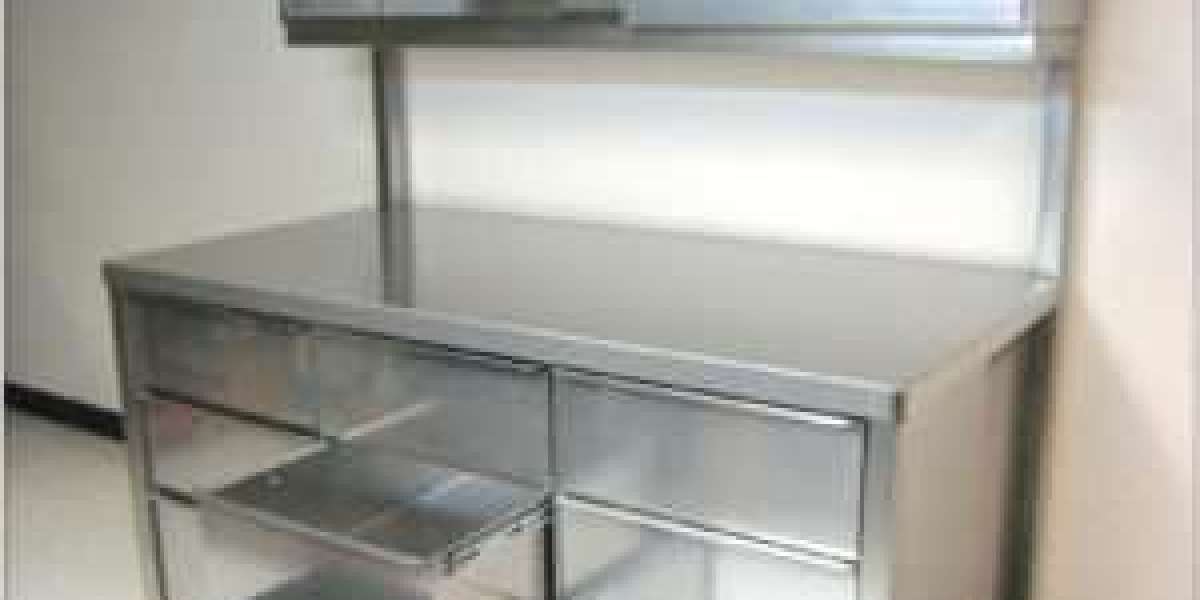Stainless steel, renowned for its enduring strength, resistance to corrosion, and sophisticated appearance, stands out as a favored material in diverse industrial applications, particularly in crafting material handling stainless steel tables. Beyond its intrinsic qualities, stainless steel's versatility encompasses a variety of surface finishes that enhance functionality, hygiene, and visual appeal. Understanding the expansive realm of stainless steel tables, and their surface finishes involves understanding their applications and fundamental options.
What are stainless steel tables, and how are they employed?
Stainless steel tables serve as robust work surfaces widely utilized in industrial settings. Fashioned from corrosion-resistant stainless steel, these tables offer a sanitary and sturdy foundation for tasks like food preparation, laboratory procedures, or manufacturing assembly.
Their impermeable surface ensures effortless cleaning and upkeep, making them well-suited for environments with stringent hygiene standards. Valued for their resilience against rust, chemicals, and impact, these tables contribute to prolonged durability.
In industrial scenarios, stainless steel tables play a pivotal role in advancing efficiency, cleanliness, and adherence to rigorous regulatory standards, ensuring workplace safety and operational excellence.
Diving into Stainless Steel Surface Finishes
Stainless steel surfaces exhibit variability, and the chosen finish significantly influences both aesthetics and functionality within the material handling table domain. Let's explore the array of commonly encountered stainless steel finishes in this context.
- Hot Rolled, Annealed (Thicker Plates): Made for applications requiring thicker plates, this finish is achieved through a hot-rolling process succeeded by annealing. The method imparts durability and structural integrity to the material, making it ideal for heavy-duty use in various industrial contexts.
- Hot Rolled, Annealed and Passivated: A refined version of the above, this finish involves additional passivation, enhancing corrosion resistance. By incorporating passivation, the finish not only benefits from increased corrosion resistance but also gains improved longevity, making it particularly well-suited for applications where durability and protection against corrosion are paramount.
- Cold Rolled, Annealed, Pickled and Passivated: Achieving through cold rolling, this finish is followed
- Cold Rolled, Annealed, Pickled and Passivated with Additional Polishing: Building upon the above, this finish incorporates highly polished rollers, resulting in a smoother, reflective surface.
- Bright Annealed: An extension of No. 2B, this finish undergoes bright annealing under oxygen free conditions, enhancing its reflective quality.
- Coarse Abrasive Finish: The mechanical application of a course abrasive creates this textured finish, serving various industrial needs.
- Brushed Finish: achieved through abrasion, this finish presents a brushed appearance, effective in masking imperfections.
- Satin Finish: Offers a refined satin appearance, striking a balance between matte and reflective qualities.
- Matte Finish: A brushed finish with increased smoothness, delivering a matte appearance.
- Reflective Finish: Emphasizes reflectivity, suitable for applications where a heightened shine is desired.
Conclusion
In the intricate world of industrial processes, the right workstations can be transformative. Stainless steel tables, with their myriad applications, stand as silent facilitators of efficiency, cleanliness, and precision. From laboratories pushing the boundaries of scientific discovery to manufacturing floors orchestrating intricate assembly processes, these tables play a pivotal role in shaping the industrial landscape.



